Helen H. Moore's Blog, page 309
September 6, 2017
Poor Paul Manafort’s world of hurt
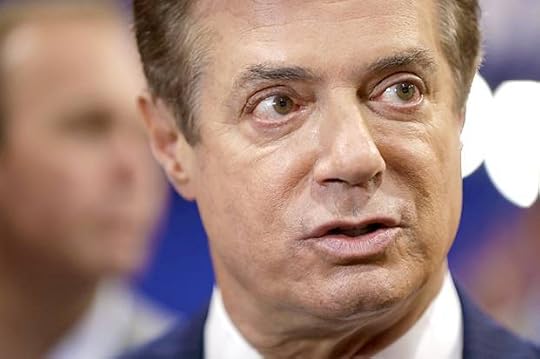
Paul Manafort (Credit: AP/Matt Rourke)
Consider the plight of Poor Paul Manafort, if you will. He had a really, really bad week last week, but then Poor Paul has had a pretty bad summer. Last week, it was revealed that New York Attorney General Eric Schneiderman has been working in conjunction with Special Counsel Robert Mueller investigating Manafort’s financial transactions. This came on the heels of news that the FBI conducted a pre-dawn raid in early August on Manafort’s home in Northern Virginia in search of financial records, which was preceded by the revelation the previous month that Manafort was in attendance at the notorious Trump Tower meeting between Donnie Junior, Kushner and various representatives of Russian oligarchs and Moscow intelligence services.
Aaaaahhh, and to think that only a year ago Poor Paul had been High Flyin’ Paul. He had joined the Trump campaign in March of 2016, been named campaign manager in June, ran the Trump campaign’s takeover of the party at the convention in July, and was on his way to presiding over Trump’s election victory in November when it was revealed in late August that he had received as much as $12.7 million in illegal payments from the party of Ukrainian President Viktor Yanukovych and was fired.
You could deploy an army of clichés here, beginning with what happens to those who fly too close to the sun wearing wings of wax, but something far more mundane appears to have been at work with Manafort and others in Trump’s orbit. Get too close to the Crapper in Chief, and you’ll end up covered in shit.
T’wasn’t always that way. Here was an apparently average Republican party hack in Washington, D.C. who had ridden the coattails of his connections to a very, very lucrative living paddling his party pirogue through The Swamp. He had worked on the presidential campaigns of Gerald Ford, Ronald Reagan, George H.W. Bush and Bob Dole, and parlayed those mundane travails into a lucrative business as a Big Time Lobbyist, working at times over the years for such foreign luminaries as Philippine dictator Ferdinand Marcos; Congolese butcher Mobutu Sese Seko; Angolan machete slasher Jonas Savimbi; and most recently, Ukrainian president and keeper of his own personal zoo Viktor Yanukovych. All of this lucrative lobbying required being registered with the Justice Department as a foreign agent, but Manafort had managed to soar above such boringly conventional legal requirements until he became associated with the Trump campaign and began attracting attention. He registered retroactively last June, just before the Republican National Convention. He should have taken that unwanted attention and his need for retroactive ass-covering as a warning and cooled it, but not High Flyin’ Paul!
In addition to his profitable lobbying business, Manafort had taken a page out of his friend Donald Trump’s playbook and was dabbling at top speed in the lower regions of the New York real estate market. Between 2006 and 2013, Manafort bought no less than four residential properties in New York City using Limited Liability Corporations. Real estate records do not indicate that they were bought using mortgages, leading to the conclusion that Mr. Manafort — the alleged recipient of so much Ukrainian funny-money — paid cash. So what did Manafort do, as he flew beneath the radar in his pre-Trump days? Why, he transferred ownership of the homes into his own name and took out a series of mortgages, that’s what he did! He took out a total of $19 million in “home equity” mortgage loans on city properties over the last five years. He bought one home in Brooklyn’s Carroll Gardens for $3 million four years ago, and took out a $7 million mortgage against the house on January 17 of this year, just three days before Trump’s inauguration. How the Brooklyn property increased in value by more than $1 million a year over four years is anyone’s guess, but perhaps it helps to know that the bank issuing the loan was run by Steve Calk, a Trump economic adviser and fundraiser who runs Chicago-based The Federal Savings Bank, with assets of over $4 billion.
High Flyin’ Paul wasn’t finished, however. The day after he left the Trump campaign, Manafort formed Summerbreeze LLC, a holding company, which only days later took out a $3.5 million mortgage on his estate in tony Bridgehampton. The loan was made by a subsidiary of Spruce Capital, founded by one Joshua Crane, a frequent partner of — you guessed it! — Donald Trump, on real estate deals. Spruce Capital is partially funded by one Alexander Rovt, a Ukrainian American born in the Ukraine, who made a fortune buying and selling fertilizer plants in the eastern bloc after the fall of the Soviet Union, often in conjunction with Kremlin connected oligarchs close to Vladimir Putin. Eventually Rovt, tired of the smelly fertilizer business in the steppes of garden spots like Bulgaria and Turkmenistan, sold out, bought the Bankers Trust Building in New York City for a tidy little $303 million in cash and now owns — you guessed it again! — about 280 buildings in the city.
Now Manafort-linked bank accounts on the Mediterranean island of Cyprus are under heavy investigation for money laundering. Manafort was connected to 10 companies doing business on Cyprus and at least 15 bank accounts, according to sources tapped by NBC news. One of the Cyprus companies, PEM Advisors Limited, was linked to Oleg Deripaska, a Russian Oligarch close to Vladimir Putin who was once denied entry into the U.S. because of ties to Russian organized crime.
Then came the call from the 26th floor of Trump Tower to High Flyin’ Paul’s Trump Tower condo to join the campaign and help drain the swamp through which he had been so happily paddling for so many years. And then came the fateful 2016 meeting between Donnie Junior, Slick-Boy Kushner, Manafort and the gaggle of Russian spies and lobbyists. Apparently Manafort made a note on his cell phone somewhere — this is what comes from sitting in a meeting holding your fucking phone, dumbass — to the effect that “donations” were discussed in the same sentence, or the same paragraph, or the same moment, or the same something anyway, as the Republican National Committee. Woopdedoo! Now we know that in the meeting with suspected Russian spooks straight out of “The Spy Who Came In From the Cold,” which was advertised in a stream of emails as the Russian government wanting to help the Trump campaign with negative information about Hillary, they apparently also discussed throwing some money Trump’s way. Wow. As if Trump hadn’t spent the last decade with a fly rod in his hand fishing in the Moscow pond not for Permit fish (found in the clear waters of the Florida Keys) but for actual permits to build some monstrosity with his name on it within sight of the Kremlin.
So sitting somewhere in a conference room today, surrounded by $1,000 an hour lawyers in regimental striped braces and rep ties, is Poor Paul Manafort. Along with Trump lawyer Michael D. Cohen and Jared Kushner, who are lawyered-up and will be facing congressional investigators soon, Poor Paul is learning the same very, very expensive and very, very tough lesson a whole bunch of other Trump factotums are learning. That is, if you were stupid enough to cozy up to the Trump campaign anytime last year — in its early days, around the time of the convention, or later in the fall, when balloons fell from the ceiling and wads of bucks started changing hands big-time, you were going to get covered in a special kind of shit: exclusive, gold-leafed, red hat shit — indictment-heavy, stink-ass fucking Trump shit. Poor Manafort. All he had to do was stay on his own goddamned floor in Trump Tower and not venture down to the 26th floor where all the funny-money Russian intelligence operative meetings were taking place, and he could have spent the rest of his life withdrawing cash from the Ukrainian mob money he had squirreled away on Cyprus, flying on Gulfstreams, and sipping minty cocktails and caressing the tail ends of comely bikinied little things on the fly bridges of yachts off Capri.
But no, High Flyin’ Paul got on a Trump Tower elevator, and now he’s Woe is Me Paul, and he’s covered in Trump shit.
“Outlander”: In the third season, all’s unfair in love and war

Tobias Menzies as Jonathan "Black Jack" Randall in "Outlander" (Credit: Starz/Aimee Spinks)
No great romance exists without tragedy in the mix, whether specified or implied. This is the reality of love and loving, as well as the charge that has made “Outlander,” returning for its third season Sunday at 8 p.m. on Starz, an international phenomenon.
Often the Starz drama is lauded for its incredible set and costume design and ambitious cinematic scope, but the series’ pensive, poetic exploration of the human heart’s mysteries, and the quixotic nobility of commitment, is singularly brilliant and underappreciated in the realm of top shelf TV dramas.
This is because “Outlander” also happens to be a romance that involves time travel in which a woman, Claire Randall Fraser (Caitriona Balfe), is the central focus. Claire, an English woman and a former combat nurse from 1945, somehow tumbles into the past — specifically a 1740s Scotland on the edge of rebellion against its British occupiers.
Romance tends to be dismissed as a soft genre. “Outlander” is anything but soft. Time and again it visits unspeakable cruelties on its hero Jamie Fraser (Sam Heughan), Claire’s great love in the 18th century, including in the second season finale, when Jamie virtuously sends Claire back to the 1940s and into the arms of her first husband, Frank Randall (Tobias Menzies), who is waiting for her.
Season 3 finds Claire grappling with the truth of what others may characterize as incredibly good fortune: she is the object of desire of two good, loyal mates who truly cherish her, each parted by 200 years. And that knowledge is heartbreaking.
The plot of “Outlander” rested on its love triangle for the first two seasons, with Claire’s heart torn between Jamie and Frank in the first season before definitively choosing her Scottish husband in the second. Diana Gabaldon’s books and the series mainly focus upon the bond existing between Jamie and Claire in 1740s, with Frank always lurking around the fringes.
In the series, executive producer Ronald D. Moore employs a balance of male and female writers and directors to tell this story with an eye toward ensuring the series honors the female perspective as well as the masculine. But essentially what this means is that Jamie gets the most opportunities to prove his bravery and his devotion, and Heughan gets to utter dialogue designed to make your soul burst. (Ladies, get you a man who declares he’ll stand before God and call you a rare woman that he loved well.)
Balfe and Heughan are radiant onscreen presences, separately and together, and while a sizable portion of the show’s fanbase drools over Heughan the dynamic chemistry he shares with Balfe sells their story. Their sexually charged relationship is augmented by writing Claire as an inquisitive, keenly intellectual who is courageously insistent upon being afforded respect in a society dominated by men.
Season 3 takes this notion in a new direction as Claire readjusts to life in 1948 as Frank’s wife, in an era that seeks to roll back the empowerment women gained through the war effort by curtailing their rights and pushing them back into the home.
“Outlander” often places Claire in situations that lead her to wonder whether she has more freedom in her version of modern times or in the 18th century. When she first fell through time, she was shocked at the lack of status women held in 1743 but learned soon enough where and how to press her influence and exercise her agency.
In stark contrast, post-World War II America is stifling.
This also means the Valentine cards are stacked against poor Frank Randall, Claire’s faithful and true man who never had to defend her honor with a sword but nevertheless pledges to support her, and the unborn child she brings with her from the past, come what may.
The first season of “Outlander” rides a whirlwind of adventure and romance, while season 2 blends the rose-colored sensuality of Jamie and Claire’s partnership with the impending calamity of Jamie’s march toward the inevitable defeat in the Battle of Culloden.
Season three commences in a place of quiet tragedy. And it’s tough to tell whose situation is worse — Jamie, who is remains broken, defeated and loveless in 18th century Scotland; Claire, stuck in a regressive post-war America where she wants for nothing except for her greatest love; or Frank, who dedicates himself to a woman besotted with a ghost.
As usual, the writers handle this divide with a combination of care and visual extravagance, although circumstances call for far less opulence than when Jamie and Claire travel to France in the second season. The Scotland in these new episodes is a cold, grey and muddy place, and the Fraser clan is gripped with anxiety, always bracing for some new harassment. Half of the series’ romantic tug rests in the idea that even a passion ripped out of time cannot stop the tide of history washing over the world.
Sadly, in 1948 and beyond, history mercilessly rolls over Frank, a man who has the terrible misfortune of having more or less the exact same face as his ancestor Black Jack Randall, a British officer with violent sociopathic tendencies. Claire loves the memory of her life and love with Frank; that much is clear. But Claire loves the reality of Jamie even more. This is no spoiler to anyone who watched the second season, which intersperses the adventures leading up to the Jacobite uprising in 1745 with Claire’s life in 1960s with her daughter Brianna (Sophie Skelton), who has the red mane of her Scottish father.
The third season affords Menzies more of an opportunity to expand upon the gentler of the two characters he plays in “Outlander,” granting Frank a still depth paternal magnanimity colored by a discontent that lends heft to his and Claire’s lamentable situation.
These new “Outlander” episodes also resets Jamie’s 18th century life, an inevitable part of dispensing with so many central characters at the end of last year and perhaps losing more in the Battle of Culloden. The season premiere finds fire in its blend of action and survival, whether concretely in the heat of battle or figuratively in the smothering societal expectations of an America that has yet to feel the impact of second-wave feminism.
For all of the despair the narrative visits upon its characters, “Outlander” remains as seductive as ever, in part due to the dangled promise of the second season finale that its lovers would one day be reunited. Because of this, the story never sinks under any ballast of hopelessness, choosing instead to spend time allowing viewers to perceive the pangs of loss in order to sweeten the arrival of any uplift fate, or the show’s writers, deem fit to dispense.
“Absolute devastation”: Island of Barbuda “barely habitable” after Hurricane Irma
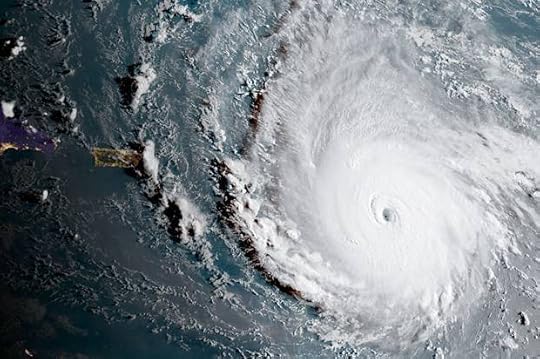
Hurricane Irma, a potentially catastrophic category 5 hurricane. (Credit: NOAA via AP)
As Hurricane Irma inches ever-closer to the U.S. mainland, passing over Caribbean islands in its approach, the first hints of its potential to devastate are chilling.
Gaston Browne, the Prime Minister of Antigua and Barbuda, speculated that “95 percent” of Barbuda’s buildings had suffered some sort of damage, ranging from a light battering to total destruction. Browne called Barbuda “barely habitable,” and said that rebuilding will take “years,” in a televised interview on Antigua and Barbuda Broadcasting Services (ABS TV).
“What I saw was heart-wrenching… absolutely devastating. I believe the extent of the destruction in Barbuda is unprecedented,” Browne said on ABS TV, after having returned from an aerial survey. He noted the threat of mosquito-borne diseases as a result of the hurricane, and said that he thought “60 percent” of the population was homeless.
“Barbuda is literally a rubble,” Prime Minister Browne said. Browne added that the relief effort was already underway, including two cargo planes from Venezuela that were slated to arrive in Antigua shortly.
"It is a total devastation- Barbuda now is literally a rubble." – President Gaston Browne.
— Steve Robson (@SteveRobson04) September 6, 2017
Four people have died so far from Hurricane Irma — one in Barbuda, one in the British territory of Anguilla, and two in French islands, according to the Los Angeles Times. The hurricane’s 185 mile-per-hour wind speeds rank it among the most powerful Atlantic hurricanes ever, according to the New York Times.
As far as hurricane readiness is concerned, island nations like Antigua and Barbuda are some of the best-prepared in the world, in part because hurricanes strike them so frequently. Yet Barbuda’s relative preparedness makes the reports of devastation more concerning, and suggests that the areas of the continental U.S. that pass under the storm’s eye may face a similar fate.
In a flea market rife with Confederate flags, a vintage shop embraces a different crowd
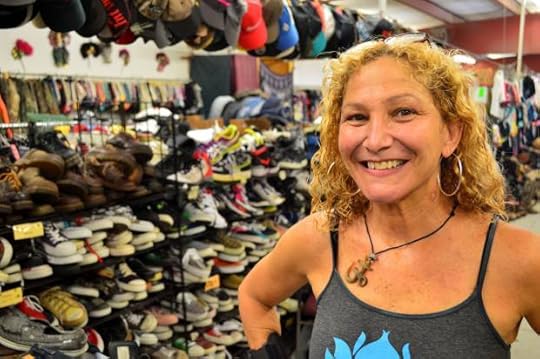
Wendy Barrett of Wendy's Closet (Credit: Tyler Gillespie)
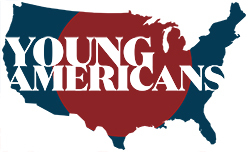
A father and his teenage son rummage through stacks of jeans on a Sunday at Wendy’s Closet in Pinellas Park’s Wagon Wheel Flea Market. It’s July, which means back-to-school shopping and heat (industrial fans keep the day tolerable). The two guys stand in rows and rows of used clothes that go from infant to men’s size 60.
“I have everything for bikers, the goth kids, the hipsters” says owner Wendy Barrett, 54. “I wanted to make a point to have everybody’s style and size, to be accepting.”
Among all these choices, the father-son combination need some help. Barrett keeps a mental catalog of clothes in her store, a shed of sorts that spans 38 ten-by-ten booths. After she helps the teenage son figure out his look, Barrett hands him a pair of jeans.
“I pay attention to my customers,” she says, “and I want them to look their best.”
Born in Miami, Barrett describes her upbringing as “totally middle class” and says her mother shopped off the sales rack at Burdines (a department store that once epitomized Florida style but shuttered in 2005). Barrett earned a finance degree, she says, from Florida Atlantic University in Boca Raton.
But a guy who sold used clothes out of his Jeep set her on a new life path.
“That was my first thrifting experience, and it was like, holy,” she says. “I’ve had eight Jeeps since then, and I now thrift for a living.”
Barrett says she gets her clothes from “nunya” — as in nunya business — and first set up a Wagon Wheel booth in 1994.
“I just sprouted from there,” she says. “I didn’t plan on being this big.”
Wagon Wheel — which stands adjacent to the outside Mustang Flea Market — has long been an institution for weekend bargain hunters. Hardy Huntley started the flea market back in 1966 as a one-man roadside. Now it spans acres and is run, Barrett says, by Huntley’s grandson.
“I feel like they’re family to me,” she says. “It’s kind of a lifestyle for flea market people.”
Barrett cracks jokes with longtime customers; she’s boisterous, which some newbie flea market shoppers might find intimidating.
“She’s everywhere and hard to keep up with,” says Betty Pryce, 58, a Wendy’s Closet employee for five years, “but she’s very good-hearted and has anything you need.”
Barrett describes Pinellas Park as “lower middle-class” and “a little scruffy.” Wendy’s Closet offers name brands, funky coats and good shoes for a fraction of the original price.
One time, she says, a doctor’s office receptionist told her, “You saved my ass for many school years.”
“I have generations of families shopping with me,” she says. “I see children, who become adults, who then become parents and have their children shop with me.”
Another mother, Barrett says, recently reached out to thank her for the shop’s inclusivity.
“I have a bunch of transgender teenagers who shop with me,” she says. “Everything’s cool here.”
A Pinellas Park flea market — with Confederate flags sold at various booths — doesn’t necessarily shout LGBT-friendly. But, it seems, Wendy’s Closet has helped some area teenagers come out of theirs.
“I don’t care what you wear,” she says, “as long as it makes you happy, and you don’t make a mess in my store.”
Want a job? It’s still about education
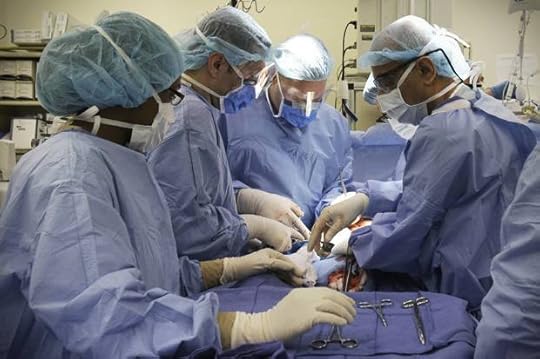
(Credit: AP/Nam Y. Huh)
During the 20th century, there was nothing that could help you achieve labor market success more than a good education. Even today, education is one of the strongest predictors of whether someone is employed and how much he or she is paid.
Yet, the rules have changed. A high school diploma in 1950 (and maybe into the 1980s) could get you a solid, middle-class job. But a diploma today is a minimum requirement to get nearly any job – and, for most, it’s not enough to get you into the middle class.
As a scholar of education policy, and of career and technical education in particular, I have seen incredible changes in technology and the workforce. And, while degree requirements have changed, education continues to be the cornerstone of job preparation and success.
A changing workforce
So what’s changed? The shift in the economic value of education has largely been driven by increased demands for technical knowledge and skill. These demands come from the evolution of technologies and trends in the offshoring of routine, middle-skill jobs. In short, the middle-class jobs that remain simply require more expertise, which usually comes from more education.
The result has been a growing gulf between high- and low-wage earners. Indeed, the gap between those with only a high school diploma or GED and those with more education is at an all-time high. And there’s no reason to expect this trend to reverse itself.
What’s more, there’s been considerable debate about the existence of a skill gap in the workforce: a suggestion that young people today simply don’t have the skills demanded by employers. Indeed, there are high levels of underemployment among younger workers in the U.S., which could suggest that employers are dissatisfied with what young applicants have to offer.
Where once employers might have offered on-the-job training, this appears to be in decline. It may be that the skill set required now is more technical and more appropriately handled by formal education programs, or it may be the demand for profit margins have diminished employer appetite for funding such programs. Whatever the cause, young applicants are expected to have certain skills already acquired before they will be hired.
What does a normal high school degree get you?
Most young people entering the workforce bring with them the skills they acquired in school. What they can expect to achieve depends a great deal on their highest level of education, and the skills that employers expect come with it.
Earning a high school diploma is more or less required in the current job market, but the average wages of those with a high school degree or less are dropping, and the number of attainable jobs for those with a high school diploma or less has been in long-term decline.
While it may be easier to get a job with only a high school education in some states than in others, this is no longer the norm in most places.
What does technical education get you?
Technical education in high school is one area where job placement may be more of a bright spot. Research shows that the work-based learning and technical skills acquired in such programs lead to better employment outcomes and that the odds of being employed right out of high school are also higher.
There’s even some evidence that participation in career and technical education programs in high school can ease the transition to college, especially two-year colleges.
Though initial employment outcomes may be better for those with technical education in high school, there’s concern among some that over the long term these students may not be better off than their nontechnical peers. Specifically, though studies have been limited in scope, researchers have found that the lack of a college degree and the reliance on specific skills (that may go out of date) could reduce lifetime earnings.
What does a college degree get you?
Job placement, employment and pay remain highest for those with a bachelor’s degree or higher, with larger and growing returns to master’s degrees. Yet, despite the good track record, more recent evidence suggests that wage benefits for college degrees are smaller than in the past.
These lessening benefits of a college degree – along with rising levels of student loan debt – have encouraged a push for more career-aligned college education that prepares graduates for well-paying and available jobs.
Where we go from here
The labor movement of the late 19th through mid-20th centuries brought sharp increases in unionization in a nation whose economy was largely driven by manufacturing and production. As the 20th century waned, the high-tech, information-driven economy required skills beyond what was typically acquired in high school.
Educational models have been changing to meet these demands.
High schools have added technical education programs that mirror growing demand for health care, IT and advanced manufacturing, while community colleges have modified and grown their programming to offer certificates and associates degrees that better align with the changing demands for labor and technical skill.
The challenge in the decades ahead will continue to be how best to help young people acquire the skills necessary to earn a living wage – both initially and across their lifetimes. I believe this will require educational programs that respond to the changing economic landscape, as well as innovative worker retraining programs for those displaced by technological advances and the continued loss of jobs overseas.
What will not change is the central role of education in helping Americans succeed.
# # #
Shaun M. Dougherty is an Assistant Professor of Education and Public Policy at the Neag School of Education and Department of Public Policy at the University of Connecticut. He holds a doctorate in quantitative policy analysis from Harvard University as well as a master’s degree in educational administration from Gwynedd Mercy University. His work focuses on applied quantitative analysis of education policies and programs, including career and technical education, with an emphasis on understanding how PreK-12 policies and programs impact student outcomes. In particular, he emphasizes how policies and practices affect educational equity related to race, class, gender, and disability. Dougherty is a former high school mathematics teacher and assistant principal. His work has appeared in the Journal of Research on Educational Effectiveness, Education Evaluation and Policy Analysis, Education Finance and Policy, and the Review of Research in Education. His research has been funded by the Institute for Education Sciences, the Smith Richardson Foundation, and the Institute for Research on Poverty, which also recognized him as an Early Career Scholar. In addition, he is a Strategic Data Project Faculty Advisor through the Center for Education Policy Research at Harvard University, and has conducted applied policy analysis with several states and large districts, as well as the Thomas B. Fordham Institute, and the Manhattan Institute.
Our collective response to the Houston tragedy is proof that greed and capitalism aren’t the only ways to run society
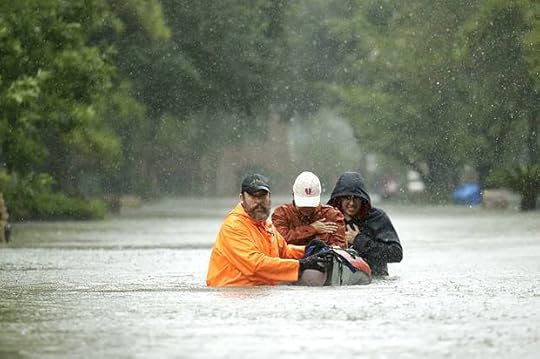
People evacuate a neighborhood inundated by floodwaters from Tropical Storm Harvey on Monday, Aug. 28, 2017, in Houston, Texas (Credit: AP/Charlie Riedel)
In the worst moments of the tragedy in Houston, something remarkable about America burst into view, as government, business, military, and especially ordinary citizens put aside thoughts of personal gain and dedicated themselves to the needs of their fellow human beings and their animals.
People in Texas and around the nation pitched in, through their labors and donations: neighbors and first responders saved lives; the Red Cross and other charitable organizations, including local churches, brought food, supplies and medicine to hurricane victims; many GoFundMe initiatives were set up; the business community (especially furniture man Jim McIngvale) donated their goods and services; government officials remained focused on the people they were elected to represent; and even the military contributed with rescue helicopters. No one seemed to care about the skin color, religion or politics of those in need.
The empathy and cooperative spirit — some might call it socialism — that gripped America was delightful to behold. But soon, we return to reality.
Capitalism Has No Incentive to Help the Poor, the Victims of Disaster, or Even Children
The New York Times summarized, “The free market often does a terrible job of providing basic services to the poor — see, for instance, the lack of grocery stores and banks in many low-income neighborhoods.”
It is we the taxpayers who support the children, elderly and disabled who make up the great majority of the recipients of life-sustaining programs. The business world has little incentive to safeguard the population against pollution and industrial poisons, or to maintain infrastructure in the inner cities and rural townships, or to make sure everyone has the opportunity for a living-wage job. And except for brief surges of generosity after cataclysmic events, big corporations have little incentive to provide for the long-term well-being of people struck down by catastrophe. Large corporations also avoid many of the taxes needed to fund federal disaster programs.
Perhaps worst of all, there is little capitalist motivation to secure the lives of children. Righteous conservatives rally behind the unborn, but say little about the excessive deaths of children being born in the U.S. Our infant mortality rate is among the highest in the developed world.
The disregard for the lives of children reflects a disdain for poor women in America: their children are more likely to die than poor mothers in other countries.
How capitalism kills
Drugs and depression: As the pharmaceutical industry keeps pushing opioids, Americans are suffering “deaths of despair” from drugs, alcohol and suicide. One out of every six Americans has taken a psychiatric drug such as an antidepressant or sedative in the past year. About 75% of heroin addicts used prescription opioids before turning to heroin, which is killing people at a rate three times greater than just seven years ago.
Americans are also dying from alcoholism at a record rate. Suicide is at its highest level in 30 years.
Job stress: The suicide rate is also clearly linked to unemployment and deteriorating work conditions, especially since the 2008 recession.
Dirty air and water: By one estimate, fossil fuels kill more people around the world every year than wars, murders and traffic accidents combined. Up to 4.5 million deaths each year are linked to our carbon-intensive economy.
Killing the public trust
The public response to the devastation in Houston shows the perseverance and efficiency of people working together for a common purpose. The same should be encouraged in public education, health care and affordable housing.
Instead, we have profit-seekers promoting forms of “school choice” that eliminate the poorest and neediest students, while draining money from the public system, even as state governments continue to cut school funding. We have a privatized health care system that spends more and performs more poorly than most other developed countries. We have hardly any places in the U.S. where a working-class family can afford housing, and yet the federal housing budget is targeted for a cutback.
In capitalist America, we even face the absurdity of proposed budget cuts for FEMA and National Flood Insurance, both of immeasurable importance after Hurricane Harvey, and inevitably to the victims of future natural disasters.
Despite the overwhelmingly caring and cooperative response to the Houston tragedy, we face the continuing absurdity of a winner-take-all capitalist system trying to convince us that the words “public” and “social” are somehow un-American. That is twisted thinking. America at its best is a community of people working together without visions of dollar signs in their eyes.
September 5, 2017
If you’re still waiting for Apple’s Airpods, these earbuds may be your next best option
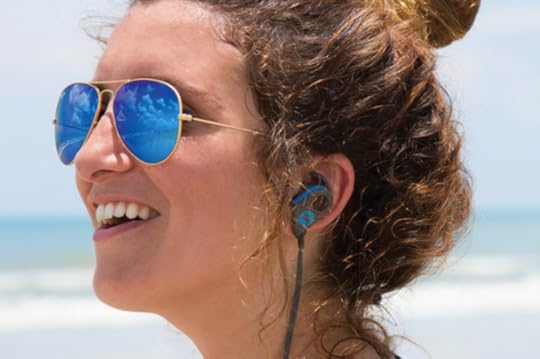
Ever since Apple dropped the headphone jack bombshell of 2016, Bluetooth earbuds have become the norm. Plenty of companies have come up with their answer to Apple’s $159 AirPods, but the price points on what appear to be tiny ear plugs can feel defeating.
These lesser known FRESHeBUDS Pro Magnetic Bluetooth Earbuds are a great option for those on a tighter budget. Normally $120, they are currently on sale for the affordable price of just $29.95. There’s obviously an extremely high standard of quality that comes with any Apple product, but these $30 earbuds deliver excellent audio for the price.
One of the coolest and most unique features is the magnetic attachments. Not only does the magnet help you avoid tangled wire hell, but it actually turns off the Bluetooth connection as soon as they snap together. When you’re ready to start listening, simply pull them apart to pair with your device. This removes one of the most inconvenient aspects of using Bluetooth technology.
Like most wireless earbuds, FRESHeBUDS deliver dependable water resistance and a built-in mic for making calls. However, the 10 hour battery life beats most competitors — generally, wireless earbuds top out at about 8 hours max.
You’ll rarely find a pair of quality earbuds like these for 75 percent off. Grab your FRESHeBUDS Pro Magnetic Bluetooth Earbuds today for $29.95.
Mastering Microsoft Office could be the key to getting that promotion

For the past 20 years, Microsoft Office has been the dominant productivity software, used in offices around the world every day. You’ve definitely used it at some point in your career and you can probably get by with the basics. However, you may not be as familiar with the advanced features as you wish you were. This familiarity is becoming more and more essential for getting hired across industries and career paths, so you could definitely benefit from filling in your knowledge gaps with the Microsoft Office Mastery Bundle.
This bundle teaches you the ins and outs of Word, Excel, PowerPoint, Outlook, and SharePoint and gives you access to over 140 lessons and over 200 hours of content. Whether you’re an Excel fiend or you don’t even know what SharePoint is, this bundle is for you. You’ll learn everything from basic functions like setting up junk mail filters to advanced functions like managing PivotTables. Pretty soon, you’ll be the person that everyone in the office comes to with their software questions.
The Microsoft Office Mastery Bundle normally costs $1,559, but you can get it now for just $39, a savings of 97 percent.
Trump may not be able to donate money to Harvey victims after all

(Credit: AP Photo/Evan Vucci)
Last week, President Donald Trump announced he would donate $1 million of his own funds to Hurricane Harvey relief efforts. White House Press Secretary Sarah Huckabee Sanders seemed to slow-walk that promise on Friday when asked where the funds would come from.
“He has not finalized where all of that will go,” Sanders said at the time. “I was actually going to use that as a perfect segue to remind everybody if you have suggestions, he is very open to hearing those. We’ve got a couple, but please send more if you have them.”
Sanders still hasn't found out if Trump's $1MIL donation to Harvey victims will be a personal donation or come from his foundation (via CBS) pic.twitter.com/gNbnDxMTho
— Kyle Griffin (@kylegriffin1) September 1, 2017
Journalist David Fahrenthold, who won a Pulitzer Prize last year for his investigations into Trump’s philanthropy, reminded his followers that it’s unlikely the Donald J. Trump Foundation, which the president chairs, would make the donation while still under the scrutiny of the office of Eric Schneiderman, the New York Attorney General.
It's my understanding that @realdonaldtrump's Fdn can't make donations now, while it's under investigation by NY AG. https://t.co/h4ssLReF2D
— David Fahrenthold (@Fahrenthold) September 2, 2017
The Donald J. Trump Foundation has been the source of controversy and scrutiny amid reports that Trump spent $258,000 from his charitable foundation to settle lawsuits that involved his for-profit businesses, according to an investigation by The Washington Post. Trump’s misappropriation of the Donald J. Trump Foundation’s funds may have also violated laws against “self-dealing” that prohibit the leaders of nonprofits from using charity money to benefit themselves or their businesses. The Donald J. Trump Foundation is funded almost entirely by outside contributions. The foundation also made headlines after reports indicated Trump met with Florida Attorney General Pam Bondi and cut her a $25,000 check that the Donald J. Trump Foundation sent to Bondi’s political fundraising committee in 2013. The donation, critics suggested, looked like an attempt to sway Bondi’s office not to take legal action against the now-defunct Trump University.
But did anyone really believe Trump’s promise to donate to the relief efforts, anyway? It doesn’t seem so. According to Tony Schwartz, the journalist and professional speaker who ghost-wrote Trump’s 1987 book, The Art of the Deal, victims of Hurricane Harvey’s destruction are in for a rude awakening. “He only promises to give,” Schwartz wrote in a tweet Friday morning. “Never actually does.”
Users on social media also questioned the veracity of Trump’s promise; some noted that Trump had promised to donate a $5 million to charity in exchange for hard evidence that proved President Barack Obama had been born in the United States. (Two years later, Trump, in a speech at the National Press Club, claimed to have upped the reward to $50 million. Trump insisted his actual offer “wasn’t reported by the press.”)
Is this the very same #POTUS who as Citizen Trump offered $4mil to find Obama's birth certificate? He's all heart ! pic.twitter.com/1dcgEbKDW5
— norah dooley (@Norah_Dooley) September 2, 2017
Trump doesn't have $1M to give from his personal account. It has to come from a foundation where he's collected $$ from others.
— Dene Grigar (@dgrigar) September 2, 2017
Donations that Trump reportedly has made also have the naughty habit of disappearing. In July 2016, New Jersey Governor Chris Christie said that his wife, Mary Pat Christie, received money from Trump in 2012, for a relief fund she ran after Hurricane Sandy battered the state. The Associated Press could not find a record of Trump’s donation, and when asked about, Christie claimed he had misspoken when asked about Trump’s donation.
Additionally, the Eric Trump Foundation has been under investigation since June, when a Forbes report revealed Donald Trump began charging for the use of Trump Organization golf courses, ultimately funneling the money into other charities which benefited his business interests, once his son Eric’s charity golf tournament started raising a substantial amount of money for St. Jude Children’s Research Hospital, which specializes in pediatric cancer. Money meant for St. Jude’s — more than $500,000 — was rerouted to other charities run by Trump associates after the elder Trump installed his own people on the foundation’s board.
The president’s history of charity is sketchy at best, and, given his purported wealth, a signal that the pledge is likely a pledge in name only, strictly for publicity purposes. The fact that people are questioning whether the President of the United States will actually make good on his promise says everything.
On this dark day for DACA consider what open borders really mean
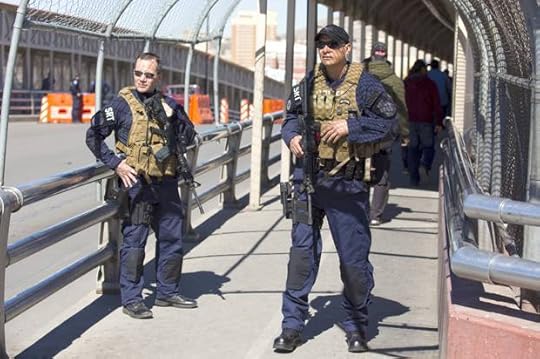
U.S. Customs and Border Protection officers patrol on the Paso del Norte Port of Entry in El Paso (Credit: AP/Ivan Pierre Aguirre)
In June, I found myself at the San Diego-Tijuana border, northbound, on my way home to Los Angeles. The ease of traveling into Mexico only a few days earlier had not prepared me for the nightmare of crossing back into my home country. For more than six hours, I waited in a slow-moving sea of thousands of Mexican and American citizens to present my passport to agents of U.S. Customs and Border Protection. As I neared the border, K-9 units wove in and out of the lines of cars and automated cameras snapped my photo. Upon reaching the checkpoint, I was met by an officer armed with a pistol and hard line of questioning. And while I was finally waved through, I watched as hundreds more were diverted to a secondary inspection area despite meeting all the standards for entry set by the U.S. federal government. It was a wholly unwelcoming experience.
In July, I listened to President Donald Trump’s graphic remarks on the Central American criminal gang MS-13. “They kidnap, they extort, they rape and they rob. They prey on children,” he said. Worse, he explained, that the “bad hombres” of MS-13 are here among us owing to “an open-door policy” at the nation’s southern border. On Tuesday, the President took a more decisive step in his assault on immigration by moving to end Obama’s Deferred Action for Childhood Arrivals program, blaming it for the uncontrolled “surge of unaccompanied minors from Central America” who in some cases would “become members of violent gangs throughout our country, such as MS-13.”
His characterization of the border wasn’t new. During his campaign for president, Trump repeatedly accused Hillary Clinton of supporting “open borders.” Even Republicans who live nearer to the border than Manhattan have shared Trump’s concerns. Under the previous administration, Representative John Carter (R-Tex.) said, he was growing tired of the erosion of American sovereignty, a result of President Barack Obama’s “open borders” campaign. This all struck me as odd, given my recent experience.
You can rest assured, our southern border does not appear the least bit open, and it certainly closed a little more today, but all the fuss does beg the question, what would an open border policy actually look like? Until about midway through the 20th century, the border with Mexico was a pretty casual affair. When U.S. borders were guarded and immigration restrictions enforced, it was done so arbitrarily — generally a symptom of episodic racial panic. Our country’s first experiment with immigration restrictions came with the 1875 Page Act, which all but excluded Chinese women. The Page Act was followed shortly by the less subtle 1882 Chinese Exclusion Act, which placed a 10-year ban on Chinese immigration to the United States.
In fact, the American philosopher Joseph Carens, author of “The Ethics of Immigration,” likens the current obsession with borders, in the U.S. and elsewhere, to feudalism. “Being born into the United States rather than the Congo is like being born into the nobility rather than the peasantry in the Middle Ages,” he explained in an interview with the Washington Post. “This completely random factor dramatically advantages and disadvantages people. Everyone thinks feudalism was wrong. Why should some people receive special social status just by birth? But If feudalism was wrong, why doesn’t the same sort of objection apply to the way we have organized the world today?”
Carens draws on the ideas of American philosopher John Rawls, specifically repurposing the “veil of ignorance,” from Rawls’s influential “A Theory of Justice,” to the issue of immigration. Rawls posited that true justice can only be determined if we are ignorant of morally arbitrary contingencies such as class, status, intelligence, etc. Accordingly, the veil of ignorance is the thought experiment in which people are blind to these contingencies. Its value lies in comparing our current system of justice with the one constructed from behind the veil, to determine how far we have strayed from the ideal.
Because from behind the veil, people are just as likely to be rich as poor, as likely to be physically gifted as disabled, as likely to be man or woman, etc, they are motivated to hedge their conception of justice to protect society’s worst-off, as they very well may find themselves in that group. Immigrants, for instance, would find themselves protected by justice from behind the veil.
“Facts such as who one’s parents are or where one is born are morally arbitrary and therefore precisely the sorts of things ruled out by the veil of ignorance,” Carens writes in “Aliens And Citizens: The Case For Open Borders,” an essay that draws on contemporary approaches to political theory to construct arguments for open borders “Given this, people [behind the veil] would select a principle of international justice that protected the right to free movement, because migration might prove essential to their life plans.”
The logic is easy to follow. If a person’s birth location is arbitrary, if they are as likely to be born in South Sudan as the U.S., all people would no doubt privilege the right to free movement — or “open borders” in Trump’s phrase.
Still, there could remain certain checks on migration. According to Carens, a Professor of Political Science at the University of Toronto, justice behind the veil would accommodate national sovereignty. “National security is a crucial form of public order,” he explains. As a result, all those behind the veil would agree to grant the state the power to prevent the entry of people seeking to overthrow their society’s just institutions.
Putting Carens’ open borders into practice would likely result in a gold rush toward affluent nations where rule of law is strong. Even if their goals and beliefs posed no threat to national security, the sheer number of migrants might be enough to overwhelm a rich country.
According to economist Michael A. Clemens at the Center for Global Development, the elimination of labor mobility barriers would likely cause wages in rich countries to fall. On the other hand, the world would also gain an additional 20 percent to 60 percent of GDP, largely as a result of labor relocating to more affluent and efficient markets. According to Clemens, if half of the world’s poor relocated to rich countries, “migrants would gain $23 trillion — which is 38 percent of global GDP.” As the Economist points out, by migrating to a rich country, the previously poor “can join a labour market with ample capital, efficient firms and a predictable legal system.” Of course, reducing global poverty is not a high priority for many border restrictionists. They’re mostly concerned with preventing illegal crossings. And they’re mostly succeeding in that. How do we know? Given the desirability of living in the U.S., and the great extremes that millions of people around the world would go to secure a place here, it’s pretty obvious that the barriers to entry are very high with or without a wall.
As long as Central American migrants continue to invest their savings, and put their lives, into the hands of deadly human trafficking organizations, it’s a sure sign that our borders aren’t anywhere close to open, and crossing them isn’t anywhere close to easy.




